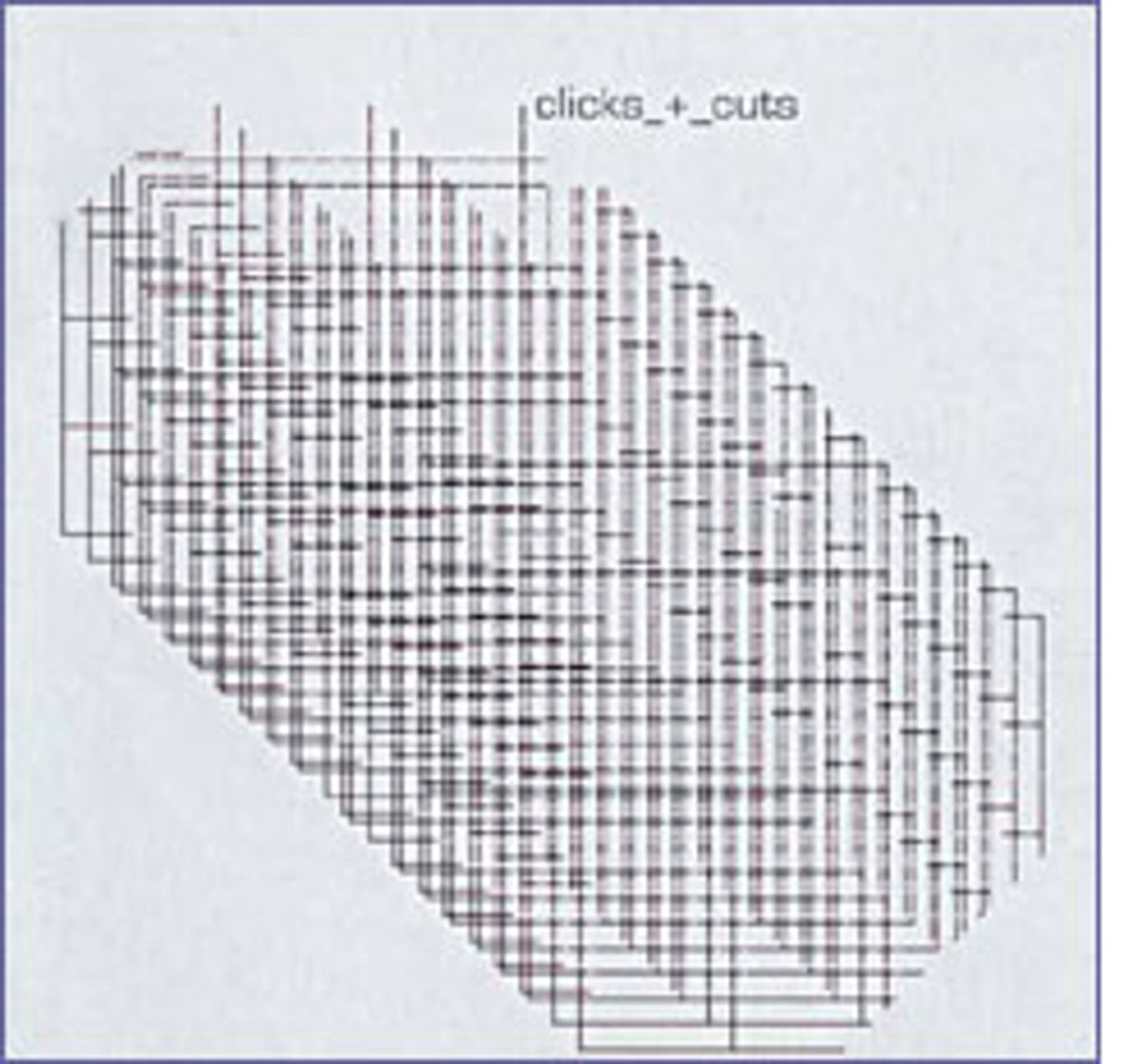Much to its credit, electronic dance music has always played fast and loose with its own history. A hugely sprawling form hyped on progress, it seems to announce a new aesthetic revolution every few weeks. Movements divide into micromovements, which then splinter into even smaller subsets, which in turn fan out into different camps, and so on. Each gets its own name, its own historical precursors, its own migration lines, its own self-aware philosophy. And even if, like the high sciences, these variations get parsed out in a language largely impenetrable to those not obsessed with obscure nuance, at the very least they stand in for electronica's heartening faith in meaningful change.
Underlying that spirit, though, is a conflict over the importance of the music's dance roots. Fans of the unfortunately named IDM (Intelligent Dance Music; ugh) consider danceability a sort of blight on their new language, while dance-floor populists dismiss the former as obnoxiously cerebral and pretentious.
"Clicks + Cuts," a two-disc compilation on the German Mille Plateaux label, documents a style shift that comes daringly close to reconciling these terms. Choosing subtlety as their subject, the mostly German artists chip away at the dividing line by softening hard-line abstraction with a sense of confounded humanity. The result is as scratchy and warm as a wool blanket.
When Miles Davis released his landmark album "Kind of Blue" in 1959, he spurred on a quiet revolution in jazz. His sneaky salvo came by way of a radical shift toward "modal" jazz, an advance that found his group dwelling in spaces within scales rather than riffing on chord changes. In purely formal terms, it was a major break from an implicit faith in long-standing musical constructs. The end result, though, couldn't have come out sounding any more smooth and inevitable.
A similar, if less subliminal, thing started happening in rock 'n' roll a few years later. Increasingly hip to Eastern sounds, a lot of rock bands began looking to the avant-garde. The Velvet Underground, for example, juiced up their amphetamine blues with John Cale's otherworldly viola drones. As with some of the contemporary electronic composers on "Clicks + Cuts," there was a direct link between Cale and progressive music theory; in his case, a school of New York musicians hell-bent on breaking the stifling code of Western music. Their mission was effectively summed up by a record title later used by Cale-cohort Tony Conrad: "Slapping Pythagoras."
In the sixth century B.C., Pythagoras built a sort of foundation for Western music based on mathematics and reason. On his one-string instrument, the "monochord," he devised a system of note arrangements that he believed would help re-create the undetectable sounds of the cosmos doing its cosmic business. Planets orbiting, stars burning up, etc. He aspired to impossibly large aims, but in actuality created a tightly composed system that gave us the notes we find within our octave range. In one octave on a piano, there are 12 keys (seven white ones and
five black ones). Of course, infinitely more note possibilities exist between, say, two C keys, but on a piano they are unplayable.
The artists on "Clicks + Cuts," like the '60s experimentalists before them, are in essence playing the sounds of the missing keys. Within the strictures of dance-born electronica -- with its innate consciousness of rhythm and shared vocabulary of sounds -- they probe gray areas often misrepresented as either black or white. But then, like Miles Davis' similarly exploratory modal jazz, their ponderous tactics have kicked up an almost imperceptible, bloodless revolution.
The most telling introduction to the musicians here comes by way of Pole, a one-man outfit that takes its name from a broken sound filter. The fractured technology gives Pole's music the bristling quality of an old dusty record, wheezing and stuttering like a throat dried by polyester fuzz. The surface noise slowly creates surface tension, advancing the conversation with "ums" and "ahs" that lurk above the grammar-conscious language laid out by techno music's forebears.
Rather than squeeze dance-inducing Kool-Aid from the fruit tree of technology, the cast of "Clicks + Cuts" -- which includes SND, Pansonic, Ester Brinkmann, Dettinger, Kit Clayton and Panacea, among others -- invests all of its dramatic capital in process. Though the results are often isolated, inward responses to techno's tendency toward fashioned, outward overindulgence, they share a similar elated sense of purpose. The set's opener, Frank Bretschneider, cares just as deeply for beats as the most room-workingest of his peers, but he professes his muddled love through the tones of hand-shielded whispers rather than face-melting screams.
Not all of the artists here are so reticent. Tracks like Vladislav Delay's "Synkopoint," with its slyly speaker-bending beat, are studied assaults on expectation -- all germ warfare bluffing as heavy artillery. But for the most part, even the most dance-savvy among them are primarily concerned with the thinly articulated clicks and cuts coughed up by machines stammering to make a point.
These are the sounds heard at the techno speedway's most remote weigh stations. There's no mistaking anyone on "Clicks + Cuts" for souped-up modes of transport, but then even the most stacked hot rods are nothing without their softly seductive purr.



Shares